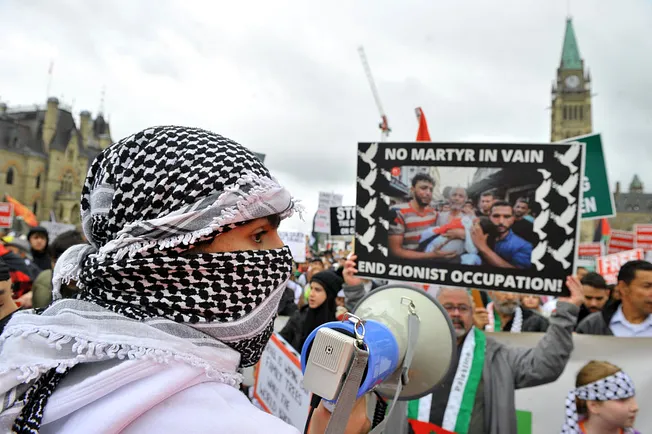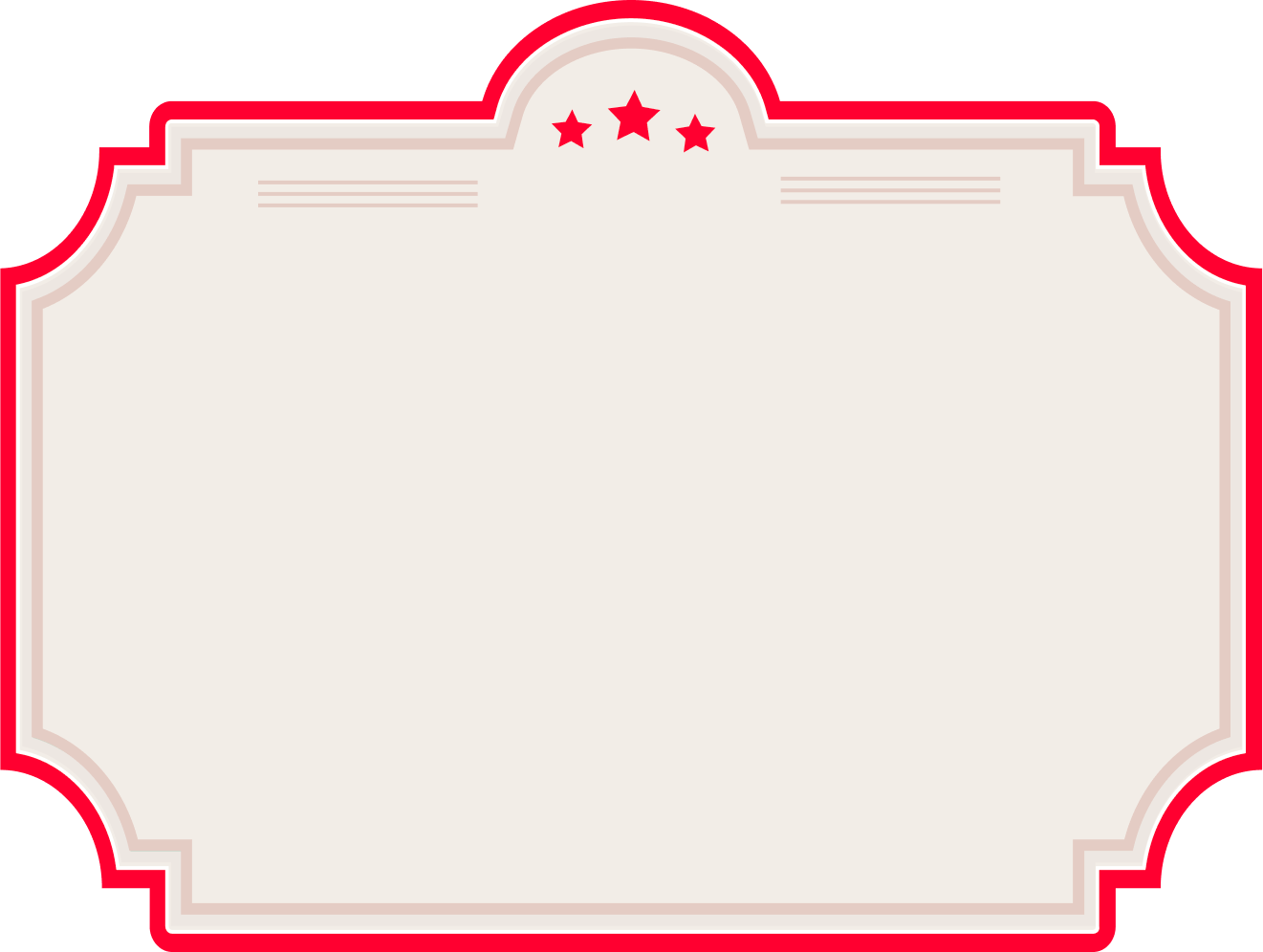OTTAWA — On Sunday, I went to a rally here full of people outraged by what they called the “genocide” and “ethnic cleansing” taking place in Gaza.
There were 500 or so attendees, mostly in their twenties and thirties, mostly from the city’s Arab community. They came with their kids, and they marched, and there was a feeling of solidarity. They also said they were scared for the Palestinians in Gaza.
The rally came a little more than a week after Hamas, the terrorist group that rules Gaza, attacked Israel—murdering 1,300 people, including children and the elderly; kidnapping 200 and taking them into Gaza where their fates remain unknown; and raping women.
Now, the Israelis were striking back, pummeling military targets with their bombs and missiles, and Gazans were anticipating a massive ground invasion. (An Israel Defense Forces spokesman told The Free Press Tuesday the military was in the “advanced stages” of preparing for the invasion.) As the pro-Palestinian marchers trekked through Ottawa, as in so many cities across the West, one million Palestinians in the northern part of Gaza were being urged by Israel to evacuate to the south. (Hamas told them to stay; Egypt refused to open its border.)
At the rally, people wore black and white keffiyehs—the headscarves that have become trendy symbols of Palestinian resistance—and waved red, green, and white Palestinian flags.
They played Arab folk music, or dabke, and chanted “Free Palestine!” and “From the river to the sea!”—a reference to the hoped-for Palestinian homeland extending from the Jordan River to the Mediterranean Sea, a.k.a. Israel.
Most everyone I spoke with agreed Israel was an illegitimate “apartheid” state. They viewed the Israeli-Palestinian conflict as an extension of the antiracist, progressive-identitarian crusade in the West—even though as many as 70 percent of Israelis are Sephardic or Mizrahi, meaning they come mostly from the Middle East and hardly “present” as white.
The marchers used words like colonizer and oppressor to describe the Jewish state.
“What Hitler did to the Jews, or the Zionists—sorry—the Zionists are doing worse now to the Palestinians,” Abdullah, a Palestinian, told me.
And they repeatedly distinguished between Jews and Zionists (those who believe that the Jewish people have the right to their own state).
“The Zionists are not Jews,” one young man told me. “We have a lot of Jews who stand with us.” (This is misleading. A 2021 Pew survey found that more than 80 percent of American Jews considered Israel “essential” or “important.”)
The marchers tended to romanticize the land of Palestine before the arrival of the Zionists in the late 1800s, portraying it as a harmonious blend of Muslims, Christians, and Jews. Zionism, they insisted, was little more than “white supremacy.”
And they appeared to know little, if anything, about the ancient Jewish connection to the Holy Land—including the destruction of the second temple in Jerusalem and dispersal of the Jewish community, in 70 AD; the subsequent emergence of the Jewish diaspora, six centuries before the birth of Islam; and, of course, that diaspora’s nearly 2,000-year ambition to return to Israel, which wasn’t fully realized until 1948.
Below are highlights from my conversations with several attendees of Sunday’s march (most of whom were reluctant to share even their first names):
I asked a couple waving a Palestinian flag—he was 20 and Lebanese; she was 19 and from Senegal—why they had ventured into the dreary, rainy morning to march.
“After the 1948 nakba, which is the ‘catastrophe’—in Arabic, nakba means catastrophe—they evacuated all the Palestinians, take them out of their homes, because they wanted to have a Jewish state by the Zionist project,” the Lebanese man told me. “And now they are doing the same thing that in 1948, and even worse, they are doing the . . .”
“It’s a nakba-cation,” the Senegalese woman said, apparently combining nakba and occupation.
The story of the nakba—widespread in the Arab world—not only ignores the Jews’ long history in Canaan, and later, Israel, but also United Nations Resolution 181, in 1947. The resolution called for a partition of Palestine into Arab and Jewish states. Israel accepted the plan. The Arab states did not, and on the night of May 14, 1948, the day Israel declared independence, Lebanon, Syria, Egypt, Iraq, and Jordan unsuccessfully attacked the Jewish state.
Viewed through the lens of the nakba, Hamas—funded by Iran since 1992—cannot be regarded as terrorists, the U.S. and Canadian governments notwithstanding.
“Hamas is not a terrorist,” the Lebanese man went on. “Hamas, they are defending Palestinians. Hamas, they are labeled as terrorist from the Western media.”
He added: “Israelis, they want to erase Palestine completely. They don’t like Arabs. That’s the reason we are standing there, standing against racism and white supremacy.”
When I asked about reports of Hamas murdering and kidnapping Israelis, the Senegalese woman said, “It’s all misinformation.”
I asked whether they believed none of these things actually happened.
The Lebanese man replied, “It could happen, but this is nothing compared to what Israel is doing. Israel is doing a genocide.”
It’s hard to square protesters’ use of genocide with the facts: In 2000, Gaza’s population was a little more than one million. Today, it’s just over two million.
Not everyone at the march was comfortable defending Hamas.
“I’m not here because of that,” one woman told me, when I asked her what she thought of the organization. “I’m just here in solidarity with the Palestinian people.”
When I pressed her on whether Hamas is a terrorist group, she seemed to be offended.
“Okay,” she said, “we got to move on. Okay, thank you so much. Okay, thank you.”
I asked several people at the rally whether the ends of Hamas’s attack on Israel justify the means, which President Joe Biden has called “atrocities.”
“Palestinians have the right to resist the occupation and the ethnic cleansing and genocide that has been ongoing since 1948,” a 26-year-old woman named Noor told me.
“We’re not going to sit back and just be okay with being killed, okay with our homes being bulldozed, okay with our families being murdered, okay with our land being given away to Western colonizing.”
Gaza has indeed long been ruled by outsiders—and not just Israel. Starting in 1949, Egypt occupied the strip. Even after the Palestine Liberation Organization was founded, in 1964, Egyptian President Gamal Nassar didn’t really recognize it.
But then, in 1967, during the Six-Day War, Israel captured Gaza from Egypt in a stunning military victory.
Then, in 2005, Israel unilaterally withdrew its settlements and troops from Gaza—meaning that, since then, it has been unoccupied.
But the next year, Gazans elected Hamas to rule them, and the year after that, Israel, with Egypt, which borders Gaza to the southwest, imposed a blockade. (This should have surprised approximately no one, given that Hamas’s charter calls for the destruction of Israel.)
As of late 2022, 17,000 Gazans were crossing the border into Israel daily for work, and Israel subsidized Gazans’ electricity and provided free healthcare.
Attendees at the march portrayed Israel as a hyper-racist and classist dystopia nonetheless.
“If you want to go into the state, you have to be a slave to Jews,” the Lebanese man said. “This is why Christians are slaves in Israel to the Jews. They’re slaves to the Israelis over there, and they treat the Israelis like they are the kings and queens over there.”
In fact, Israel is the only democracy—and a multireligious, multiracial, and multiethnic one at that—in the Middle East. Nearly 74 percent of Israelis are Jewish, while 18 percent are Muslim, and nearly 2 percent are Christian. A 2022 State Department report on religious freedom in Israel found that the country’s “laws and Supreme Court rulings protect the freedoms of conscience, faith, religion, and worship, regardless of an individual’s religious affiliation.”
Everyone I spoke with said the political entity of Israel had to be wiped off the map, but they were unclear about what should happen to the Jews living there.
When I asked Abdullah and his friends, including a woman who only agreed to speak with me off-camera, where the Jews should immigrate to, they were vague.
“They should go back to their country,” the woman said. She added that Zionists “believe they have to be there and kill people and take their home, and no matter what they have to stay there. No matter what. There is a difference. But Jewish, they know, this is not their state. This is not their place.”
There’s a certain logic to this thinking—if you accept that the Zionists who first came to Palestine were trespassers, and the founding of the modern Israeli state was an abomination (a nakba). But this formulation glosses over the fact that, as of 2020, 78 percent of Israelis were native-born, or sabras.
Rupa Subramanya is a Canadian-based writer for The Free Press. Read her last piece “Justin Trudeau’s Self-Immolation,” and follow her on X, formerly Twitter, @rupasubramanya.
And to support our work, become a Free Press subscriber today:












